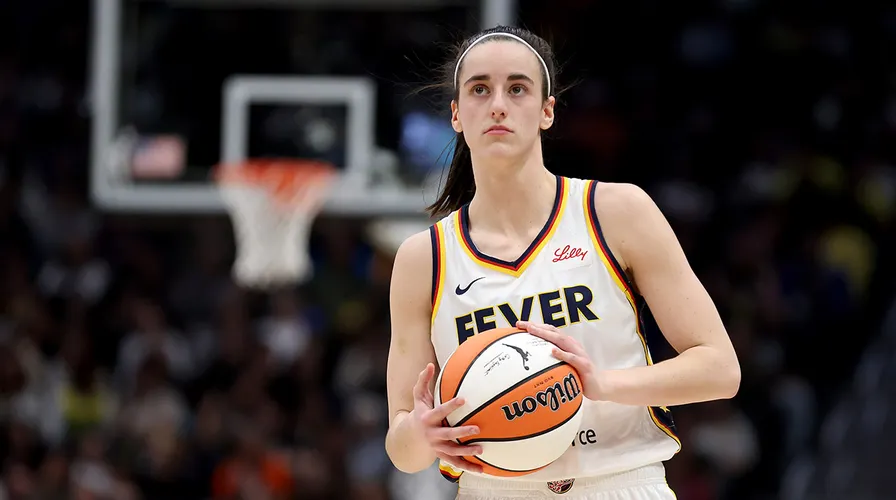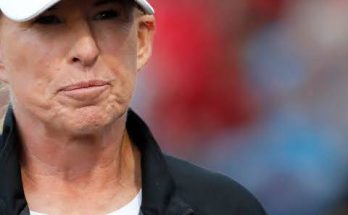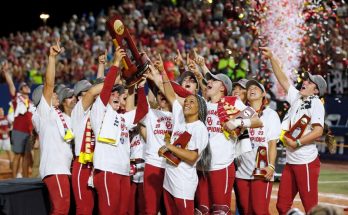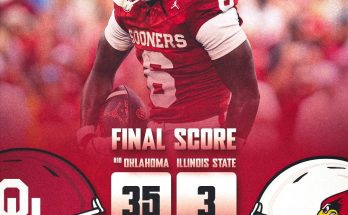In recent weeks, the WNBA has been embroiled in a conversation about the scheduling and coverage of women’s basketball, with particular focus on the Indiana Fever and star player Caitlin Clark. A surge of criticism has emerged regarding the scheduling of games and TV coverage for women’s basketball, which some feel does not give enough attention to emerging talents like Clark and teams like the Fever, who have seen their share of struggles and triumphs.
In response to the ongoing debate, Lisa Leslie, a WNBA legend and one of the sport’s most influential voices, has stepped forward to offer her defense of both Caitlin Clark and the Indiana Fever. Leslie’s impassioned response calls attention to the growing efforts to elevate the visibility of women’s sports while acknowledging the systemic issues that still exist in the sports media landscape. Her remarks highlight her unwavering support for Clark, the Fever, and the WNBA as a whole as they continue to push for greater recognition and respect in the world of professional sports.
The Criticism: Scheduling and TV Coverage of Women’s Basketball
The controversy around the TV schedules for women’s basketball has become a recurring issue in recent years. Despite the increasing popularity and prominence of women’s sports, there has often been a disconnect between the demand for coverage and the actual airtime given to female athletes and teams. The Indiana Fever, one of the most storied franchises in WNBA history, is no stranger to this issue. The team has faced scheduling conflicts, irregular game times, and limited TV coverage that has led to frustration among fans and players alike.
As for Caitlin Clark, her success on the court has quickly turned her into a national sensation. A star at the University of Iowa and now entering the professional ranks, Clark has captured the imagination of basketball fans across the country. Her historic scoring performances, her ability to stretch the floor with her deep three-pointers, and her leadership on the court have made her one of the most marketable athletes in women’s basketball. However, despite her overwhelming popularity, the coverage of her games has often been criticized for being insufficient or relegated to niche networks with limited reach.
In the case of the Indiana Fever, the scheduling debate has also revolved around their positioning within the broader media landscape. As the Fever continue to rebuild after a challenging few seasons, the spotlight on their games has been less than optimal, leading to frustration among fans who want to see their team perform on a bigger stage. With the rise of new talent like Aliyah Boston, NaLyssa Smith, and others, the Fever are hoping to gain more exposure and build a loyal following. However, the TV scheduling, often dictated by national broadcast deals, continues to present challenges in making the Fever’s games accessible to a wider audience.
Lisa Leslie Steps In: Defending Caitlin Clark and the Indiana Fever
As the debate around TV scheduling and coverage of women’s basketball intensified, WNBA legend Lisa Leslie took to social media and public forums to defend Caitlin Clark and the Indiana Fever. A Hall of Famer and a four-time WNBA champion, Leslie has long been an advocate for women’s basketball, using her platform to fight for the visibility and respect that female athletes deserve. Her comments come at a time when the WNBA and other women’s sports leagues are battling for more airtime and recognition in the sports media landscape.
Leslie, who has firsthand experience with the struggles women’s basketball has faced in terms of exposure, emphasized the importance of supporting Clark and the Fever in their journeys. “Caitlin Clark is an incredible talent, and she deserves to be seen by as many people as possible,” Leslie said in a recent interview. “It’s frustrating to see players like her not getting the attention they deserve when they’re putting on historic performances. The game has changed, and the way we cover and promote women’s basketball needs to evolve too.”
Leslie’s comments underline the growing frustration with the way women’s basketball has been historically undervalued by the media. Despite the WNBA’s significant growth in the past few years, the league still faces hurdles in terms of equal coverage, sponsorship, and airtime when compared to men’s professional sports. Leslie, who has seen the evolution of the WNBA firsthand, believes that change is possible but only if the media continues to expand its commitment to women’s sports.
The Importance of Caitlin Clark and the Indiana Fever for Women’s Sports
Both Caitlin Clark and the Indiana Fever represent a new wave of talent and excitement within women’s basketball. For Clark, her rise to fame has been nothing short of meteoric. In her time at Iowa, she established herself as one of the best players in college basketball, breaking records and consistently impressing with her all-around play. Her three-point shooting, basketball IQ, and ability to perform in high-pressure moments have earned her recognition on a national scale, and her transition into the WNBA has generated significant buzz.
But beyond Clark’s individual success, her story symbolizes the growing demand for women’s basketball to receive the same level of respect and visibility as their male counterparts. “Caitlin has become a role model for so many young girls who are just starting to play basketball,” Leslie said. “She’s not just a great player; she’s changing the game. She’s part of a larger movement that’s lifting women’s sports up and showing the world what we’re capable of.”
The Indiana Fever are another team at the forefront of this movement. Though they have faced their share of struggles in recent years, the Fever are in a rebuilding phase that is quickly gaining momentum. With young stars like Aliyah Boston, the Fever have the potential to challenge for a playoff spot in the near future. The franchise’s history of success, including their 2012 WNBA championship, provides a strong foundation for the team’s resurgence.
The Fever have also been instrumental in showcasing emerging talent within the WNBA, helping to give young players like NaLyssa Smith and Emily Engstler the platform they need to succeed. With new leadership and a growing roster, the Fever are looking to build a competitive team that will capture the attention of both fans and media outlets. Unfortunately, the scheduling of their games and the overall lack of TV coverage has hampered their ability to reach a wider audience, making it harder for fans to fully engage with the team’s progress.
Leslie has been a vocal supporter of the Fever’s efforts to gain more recognition. “The Indiana Fever have been a staple of women’s basketball for years,” she said. “They’ve had their ups and downs, but they’ve always been a competitive team. It’s time for the media to show them the respect they deserve and make sure their games are getting the exposure they need to continue growing.”
The Impact of Media Coverage on Women’s Sports
One of the primary issues Leslie addressed in her defense of Clark and the Fever was the ongoing problem of media coverage for women’s sports. Historically, women’s sports have been relegated to secondary coverage or ignored entirely by the mainstream media. In recent years, there has been some progress, with networks like ESPN and TNT airing more women’s games and events, but the amount of airtime is still nowhere near that of men’s sports.
Leslie called on media companies, networks, and advertisers to step up their commitment to women’s sports and help close the gap in coverage. “We need more women’s sports on national television. We need more games being broadcasted on prime time so that people can see the talent that’s out there,” she said. “We’ve come a long way, but we have a long way to go.”
Leslie’s comments resonate with the broader conversation surrounding gender equity in sports. While female athletes have continued to break barriers and achieve greatness, the media’s reluctance to give them equal airtime and attention remains a key obstacle to their success. For female athletes like Caitlin Clark and the Indiana Fever, increased media exposure is essential to growing the sport, attracting sponsorships, and inspiring the next generation of basketball players.
Moving Forward: What Needs to Change
Leslie’s passionate defense of Caitlin Clark and the Indiana Fever is a call to action for the sports media world to do better. It’s a call for equal representation, fair scheduling, and a greater emphasis on women’s sports at all levels. The impact of such changes would be far-reaching, benefiting not only current athletes but also future generations who would have access to more opportunities and exposure.
The WNBA, the Fever, and athletes like Caitlin Clark are not just pushing for more recognition—they’re fighting for a fairer, more inclusive sports landscape. As Leslie aptly put it, “Women’s sports are not a trend. We are here to stay, and it’s time for the world to recognize our value and our contributions to the sports world.”
In the coming years, there’s hope that media companies, sponsors, and fans will rally behind these efforts. As the demand for women’s sports continues to grow, the media will play a pivotal role in shaping the future of these leagues and athletes. For now, the work of trailblazers like Lisa Leslie will continue to inspire and support the next generation of athletes striving for recognition and equality in the world of sports.



